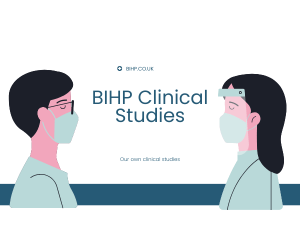
The Hidden Health Risks of Sunscreen, science-Backed Concerns You Need to Know, sunscreen is widely promoted as an essential defence against sunburn, premature ageing, and skin cancer.
Health organisations and dermatologists recommend daily application reinforcing the belief that sun cream is completely safe, however, the hidden health risks of sunscreen are now under increasing scrutiny as scientific evidence raises concerns over potential dangers.
Research reveals that several chemical UV filters disrupt hormones, penetrate the bloodstream, and trigger allergic reactions, some compounds have even been linked to cellular damage and potential toxicity.
Additionally, excessive sunscreen use may contribute to vitamin D deficiency, which affects bone strength and immune function, protecting skin from harmful UV radiation remains crucial, but the safety of sunscreen formulas deserves closer examination.
This article uncovers the lesser-known health risks associated with sunscreen, empowering consumers with essential information to confidently choose products that are both safe and effective.
https://pmc.ncbi.nlm.nih.gov/articles/PMC7648445/
The Hidden Health Risks of Sunscreen: Chemical vs Mineral Formulations
Sunscreens fall into two categories: Chemical and mineral-based formulas, each protects against UV radiation differently, but chemical sunscreens have come under increased scrutiny due to their potential health effects.
- Chemical Sunscreens – These contain synthetic UV filters such as oxybenzone, octinoxate, avobenzone, and homosalate. These compounds absorb UV rays and convert them into heat, which is then released from the skin.
- Studies show that many of these chemicals enter the bloodstream, raising concerns about long-term exposure, mineral Sunscreens – Also known as physical sunscreens, these use zinc oxide or titanium dioxide to form a protective barrier on the skin.
- Instead of absorbing UV rays, they reflect them. While generally safer, concerns exist over the use of nanoparticles, which could penetrate skin cells and cause oxidative stress.
Recent studies have cast serious doubt on sunscreen safety, highlighting previously overlooked health risks, prompting authorities to initiate regulatory reviews and impose bans in certain regions.
Toxic Chemicals in Sunscreen and Their Health Effects
Several common sunscreen ingredients have raised significant health concerns, prompting growing scrutiny among experts and consumers alike. Among those identified as particularly problematic are:
- Oxybenzone – A known endocrine disruptor, oxybenzone mimics oestrogen and may lead to hormonal imbalances, reduced fertility, and developmental issues in children, scientists have detected it in urine, breast milk, and amniotic fluid, highlighting its ability to enter the body.
- Octinoxate –Studies clearly indicate that this compound disrupts thyroid activity, significantly modifying hormone balance, such interference has notable implications for metabolic processes and can negatively impact reproductive health.
- Homosalate – Commonly found in sun creams, homosalate builds up in the body over time and disrupts hormone regulation, scientists are investigating its potential impact on reproductive health and foetal development.
Regulators, including the U.S. Food and Drug Administration (FDA), have started reassessing the safety of these ingredients, despite their widespread use pressure is mounting for stricter testing and clearer guidelines.
The Hidden Health Risks of Sunscreen-Hormone Disruption and Endocrine System Interference 🩺
Endocrine disruptors interfere with the body’s hormonal balance, which can lead to reproductive, developmental, and metabolic disorders, many chemical sunscreen ingredients act as endocrine disruptors, mimicking or blocking hormones, scientific studies have linked oxybenzone and similar chemicals to:
- Lower sperm counts and testosterone levels in men
- Early puberty and menstrual irregularities in women
- Increased risks of hormone-related cancers, including breast and prostate cancer
Pregnant women and children face the highest risks to these sun creams, exposure to endocrine disruptors during foetal development may affect long-term health, increasing the likelihood of metabolic disorders and developmental abnormalities.
Given these potential risks, researchers strongly recommend exercising caution regarding the use of chemical-based sunscreens, particularly among children and individuals who are pregnant, until further evidence is available.
Skin Absorption: Sunscreen Chemicals in the Bloodstream
Contrary to past assumptions, sunscreen chemicals do not remain on the skin’s surface, research confirms that many UV filters penetrate the skin barrier and enter the bloodstream.
A 2020 FDA study detected six common sunscreen chemicals, including oxybenzone and avobenzone, in blood samples at levels exceeding safety thresholds, even a single application led to measurable absorption, with chemicals remaining in the body for weeks.
The long-term effects of these chemicals remain uncertain, moreover scientists warn that frequent exposure may have unintended consequences, particularly for those who apply sunscreen daily.
In the absence of definitive scientific evidence, health experts strongly advise the public to reduce their exposure to chemical-based sunscreens and seek natural alternatives whenever practical.
Allergic Reactions and Skin Sensitivity Issues
Many commercial sunscreens contain allergens and irritants that trigger skin reactions, some of the most common concerns that may well affect you or those around include:
- Contact Dermatitis – Chemicals like oxybenzone and octocrylene can cause allergic reactions, leading to redness, itching, and inflammation.
- Photosensitivity – Certain ingredients become unstable in sunlight, making skin more sensitive and increasing the risk of rashes.
- Preservatives and Fragrances – Parabens and synthetic fragrances often cause irritation, particularly in individuals with sensitive skin.
Allergic reactions to sunscreen are increasing, with studies showing a rise in cases of skin irritation linked to chemical UV filters, people with conditions like eczema or rosacea may experience worsening symptoms when using chemical sunscreens.
Free Radical Damage and Skin Cell Harm
Sunscreen is designed to protect skin from sun damage, but some ingredients may have the opposite effect, certain chemical UV filters degrade when exposed to sunlight, generating free radicals that can damage skin cells.
- UV Filter Breakdown – Some chemical ingredients break down in the sun, producing reactive oxygen species that contribute to premature ageing and inflammation.
- Nano-particles and Cellular Penetration – Scientists are investigating whether nanoparticles in mineral sunscreens can enter skin cells, leading to oxidative stress and DNA damage.
Although sunscreen remains essential for sun protection, potential risks associated with some formulations need further investigation.
Sunscreen Dangers, Vitamin D Deficiency, and Health Risks 🌞
Excessive sunscreen use may be contributing to a rise in vitamin D deficiency. The skin produces vitamin D when exposed to sunlight, but high-SPF sun creams block this process.
Vitamin D is essential for:
- Bone health and calcium absorption
- Immune system regulation
- Mood balance and mental health
Low vitamin D levels have been linked to an increased risk of osteoporosis, autoimmune diseases, and depression, Some experts recommend moderate sun exposure without sunscreen to maintain optimal vitamin D levels while balancing the risks of UV damage.
Safer Alternatives: How to Protect Your Skin Without Risk
Concerns over the hidden health risks of sunscreen have led many consumers to seek alternative methods of sun protection, there are Safer ones to choose here are some options to consider:
- Mineral-Based Sunscreens – Look for formulations with non-nano zinc oxide or titanium dioxide to reduce absorption risks.
- Natural Oils with UV Protection – Some plant oils, such as raspberry seed and carrot seed oil, offer mild sun protection while nourishing the skin.
- Sun-Smart Habits – Wearing protective clothing, seeking shade, and avoiding peak sun hours help minimise UV exposure without relying on chemicals.
Regulators continue reviewing the safety of sunscreen ingredients, until clearer guidelines emerge, choosing safer alternatives remains a wise decision.
Conclusion
Sunscreen remains an important tool for preventing sun damage, but the hidden health risks of sunscreen cannot be ignored, studies have linked several chemical ingredients to hormone disruption, skin irritation, and vitamin D deficiency.
While protection from harmful UV rays is essential, choosing safer formulations is just as important, consumers deserve transparency about the potential risks of sunscreen ingredients.
Striking a balance between effective UV protection and safety is crucial, until further investigation provides definitive answers, opting for mineral-based formulations and sun-smart habits offers the best protection.
Best smelling candles- The Hidden Dangers of Scented Candles





